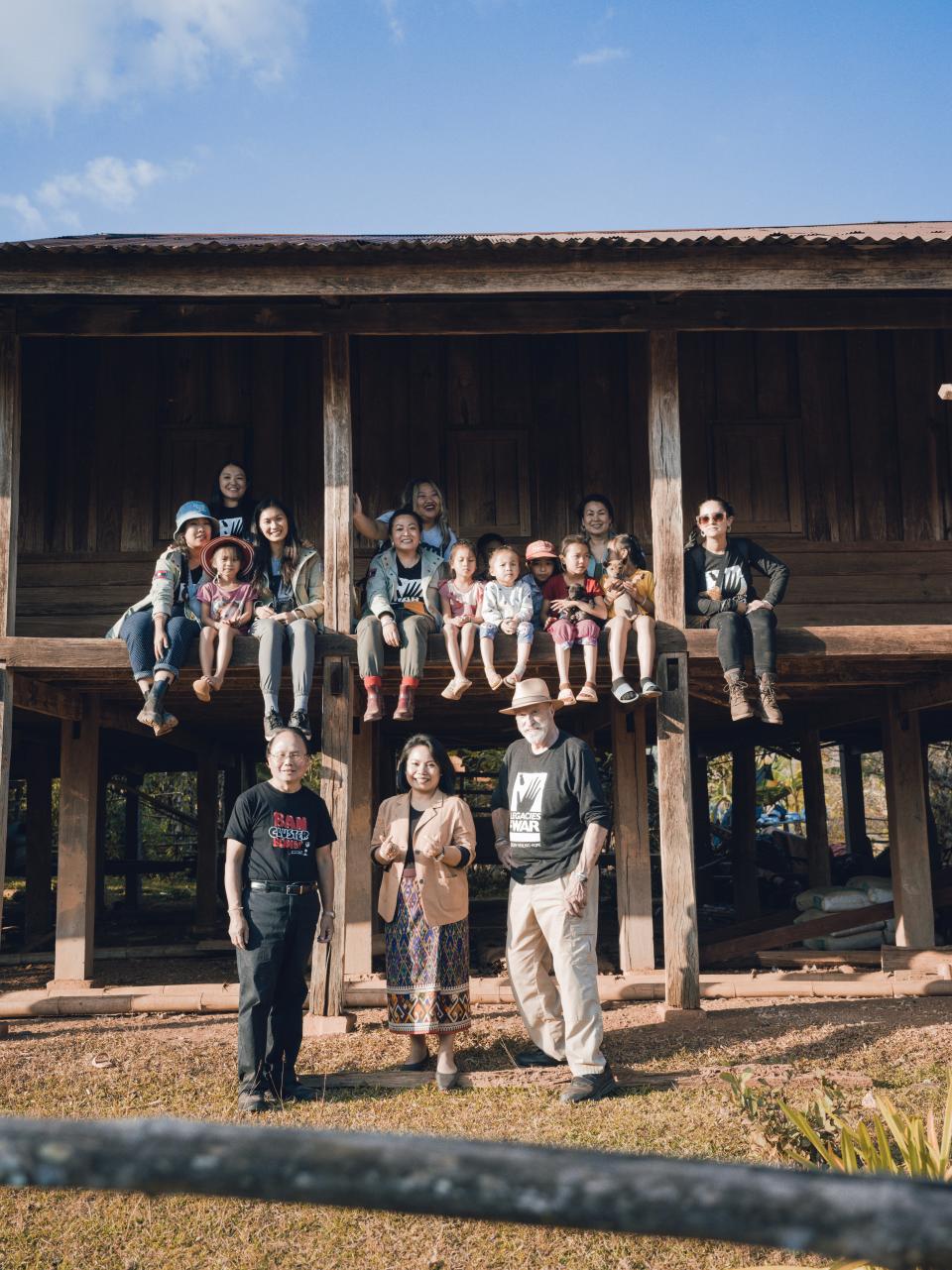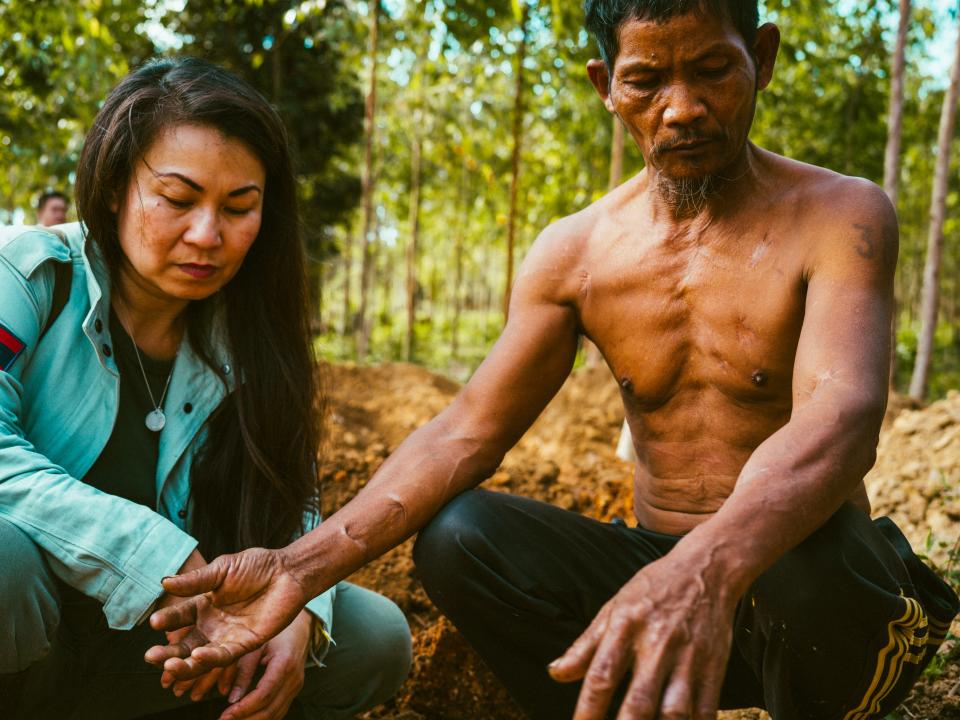I helped clear unexploded bombs in my birthplace to save the next generation
I celebrated my birthday this year by returning to Laos, the country of my birth. The country I gave up when I became a naturalized U.S. citizen.
In October, I had the opportunity to return with the advocacy group Legacies of War and participate in the clearance of unexploded ordnance. Laos was finally calling my name. It was my first time back since my family fled to America in 1981, when I was only 7.
I had sworn that I would return when I reached my 18th birthday in 1992. But back then, Laos was still unstable. It was still recovering from both the war in neighboring Vietnam and the American secret war – when between 1964 and 1973, the United States dropped more than 2.5 million tons of ordnance on Laos, making it the most heavily bombed country per capita in history – the secret war that my family fled.
The mission to Laos
I was recovering, too, but I always knew that I'd return one day. College, work and having children delayed the dream.
Coming to America: How dressing as a boy helped me survive war
Four decades later, I returned to Laos the same way I left – by way of Thailand. Then, I left by boat in the darkest hour of night and in a state of inexplicable urgency and fear. This time, I flew on Lao Airlines across the Mekong River to the capital city Vientiane.
As the pilot’s voice informed us that we'd land soon, I expected my heart to beat to patterns of fear, apprehension and caution – the feelings that had overwhelmed my childhood memories of Laos. I was finally here at last. I released a quiet prayer to my father who had yearned and dreamed of returning to his beloved country but died before he could.
I told myself that my objective for returning was to support the mission of ridding Laos of unexploded ordnance, not to celebrate a homecoming. After all, I was no longer a Lao national.

While in Vientiane, before meeting with partner nonprofit organizations and trekking to five cities in 15 days, I met a reporter from the Laotian Times for an interview about our personal stories. This lovely and confident young woman, born long after the war, raised a question that haunted me for the rest of the trip. She asked about the circumstances around my emigration to the United States and whether I had struggled with life in America.
The answer was complex, but the truth was – I really didn’t know. And I had often felt somewhat lost for four decades, because my parents never talked about why we fled.
Home was mined with red dots
Surprisingly, after all these years, I did not feel like a stranger as expected, nor was I treated as one. As I traveled, there were many firsts for me as an adult: I reveled in the native pronunciation of my given name; I had full conversations completely in Lao; I stood in a bomb crater; I saw bombs melted into jewelry; I helped deactivate ordnance so that it could not harm the next generation; I drank Beerlao.

At every passport checkpoint, there was much appreciation for my very “Lao” name. It was noted repeatedly that it was a man’s name (my father had thought it was a good way to protect his daughters during war). Officers would look at my U.S. passport and inquire, but not a single person asked me how to pronounce my name and explain where it was from. It was liberating.
In Savannakhet province, while visiting with demining operators at The HALO Trust, I spotted something that connected a bunch of dots in my head. On the wall in the briefing room, there was an old print of a large map titled, “U.S. Bombing Missions over Laos.” It showed areas consumed by red dots. Each dot represented a “sortie” – one of 580,000 bombing missions from 1964 to 1973.
Legacies of war: Undetonated bombs still litter my birth country. Ukraine war shows world hasn't learned.
Southern Laos was engulfed in red, predominantly in Savannakhet. I suddenly heard my father’s voice: It’s not safe for us. We need to leave Laos. A deafening rush of memory and emotions roared through my consciousness. I never knew what my father meant until that moment. We couldn’t go back home. Home was littered with red dots.
I tried not to dwell on my personal woes. My priority was to understand the operations of mine clearance groups, make site visits and connect with victims and survivors. In the south, the older generation is trying to abandon war memories but are still carrying visible wounds.
The young ones, innocent of their history, are constantly reminded that they are living with unexploded land mines. A third of the bombs dropped did not explode on impact, leaving millions buried in Laos today.

'I am much older since the war': Our Ukrainian friends' first Thanksgiving is bittersweet
Vietnam War veteran: After a month in Ukraine, what this 77-year-old wants his fellow Americans to know
On my last night, I could not sleep. Images of the past two weeks assailed me: the deminer who lost her father to a bomb; the bomb craters in the rice fields; the shrapnel in a survivor’s forearms; the houses held up by mortar and shells; the desolation at the Tham Piew Cave, where in 1968 a U.S. rocket killed at least 374 men, women and children hiding from the bombing campaign.

All these images mixed with my own childhood memories of Laos: foraging in bamboo groves; a house on stilts; my reflection in the river; my father’s urgency; my mother’s fear; our forced departure; bullets raining in the night sky.
Then, recollections of my first years in America rushed in: running away from school; the coercion of a new language and ideals; trying to fit in while never really belonging.
All that generational trauma hit me – like a train. I sobbed. I had never wanted to leave Laos. I didn't mean to leave this magical country, these beautiful people or these memories behind. I had waited for so, so long for my father to take me back home. Dear Laos, I am so sorry that I had to give you up, and I am so sorry that I gave up on you.
Opinion alerts: Get columns from your favorite columnists + expert analysis on top issues, delivered straight to your device through the USA TODAY app. Don't have the app? Download it for free from your app store.
Yes, I struggled in the United States. But I lived. I was heartbroken with guilt. I escaped a life of peril and uncertainty. Many Laotians did not. More than 50,000 people have died or been injured by the ordnance left behind in the soil.
Sitting in my hotel room, I felt betrayed by my father, by the people who swore to help and protect Laos, and even by Laos herself. Why didn’t any of you tell me about the unexploded mines? That children and families were suffering in these villages? Why didn’t you tell me, dear Laos, that you were constantly tormented by tragedy? If I had known, I would have returned decades ago.
It wasn’t safe in 1974 when I was born and five decades later, it still isn’t.
Friday is Lao National Day. Despite the past, it's a day to celebrate the survival and the achievements of the Lao people in the United States and in Laos.
Khamsone Sirimanivong, president of Arizona Costume Institute at Phoenix Art Museum, is a board member of Legacies of War.
You can read diverse opinions from our Board of Contributors and other writers on the Opinion front page, on Twitter @usatodayopinion and in our daily Opinion newsletter. To respond to a column, submit a comment to letters@usatoday.com.
This article originally appeared on USA TODAY: Unexploded bombs in Laos drew me back on a Legacies of War mission

 Yahoo Movies
Yahoo Movies 
